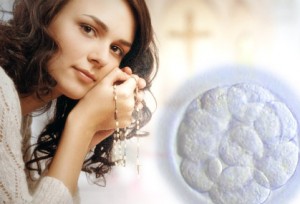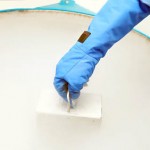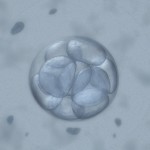Posts Tagged ‘embryo donation’
Survey Results: Imagine You Are an Embryo Donor
The first segment of this series introduced the disclosure topic and linked to our first of three surveys. There were a total of 17 respondents with the results examined below.
Survey Results: “Imagine You Are an Embryo Donor”
1. If you were an embryo donor, which would you prefer (choose only one)?
- I would prefer an Anonymous Embryo Donation process. 18% (3/17)
- I would prefer an Approved Embryo Donation process. 41% (7/17)
- I would prefer an Open Embryo Donation process. 41% (7/17)
Comments:
Anonymous and Approved Embryo Donation procedures together were only slightly preferred over Open Embryo Donation. It would appear those answering the question wanted to know more about the recipients than a simple anonymous process would provide.
2. If I donated my embryos, I would tell the following:
| Relationship | Yes | No | N/A (not alive or no current relationship) |
| My parents | 71% (12/17) | 29% (5/17) | 0% (0/17) |
| My in-laws | 47% (8/17) | 41% (7/17) | 12% (2/17) |
| My siblings | 59% (10/17) | 24% (4/17) | 17% (3/17) |
| My children | 65% (11/17) | 29% (5/17) | 6% (1/17) |
| My friends | 65% (11/17) | 35% (6/17) | 0% (0/17) |
| Average: | 61% (52/85) | 32% (27/85) | 7% (6/85) |
Comments:
Twice as many respondents would tell family and friends about donating their embryos than would not tell. Embryo donors have previously stated telling friends and family might result in harsh judgments from those who didn’t fully understand their motivations for donation. This concern for judgment may have been reflected by the fact that in-laws were the least frequently told group in the poll above.
3. Would you want to have the embryo donation offspring told that they came from donated embryos?
- Yes 47% (8/17)
- No 18% (3/17)
- Not certain 35% (6/17)
Comments:
About half of the donors would want the offspring told they were from donated embryos. The other half was uncertain or definitely would not disclose. The uncertain group may gravitate towards nondisclosure over time unless committed to disclosure process early.
4. If I choose an Anonymous or Approved Embryo Donation process (both are still anonymous), I would prefer (choose only one):
- To remaining Anonymous: 12% (2/17)
- Be initially Anonymous with the possibility of Open-Identity at Any Age: 59% (10/17)
- Be initially Anonymous with the possibility of Open-Identity at 18+ Years of Age: 29% (5/17)
Comments:
About 88% wanted an Open-Identity process. The respondents also wanted offspring to have the ability to contact donors when the children were younger than 18 by two-to-one over those wanting Open-Identity at 18 years of age or older. This is very different than what is currently done with adoption.
5. If I choose the Open Embryo Donation process, I would prefer:
- Open Embryo Donation with Open-Identity at Any Age: 71% (12/17)
- Open Embryo Donation with Open-Identity at 18+ Years of Age: 29% ( 5/17)
Comments:
Consistent with question four, the respondents wanted Open-Identity younger than 18 years of age, which is very different from what is done in the adoption world.
Thank you for your input. Tomorrow we will release the next installment of this series – Disclosure Issues From the Perspective of the Embryo Donor. We’ll also launch our next survey this week as well and hope you will give us your feedback.
Disclosure Issues In Embryo Donation: A Five Part Series
Introduction
Embryo donors and recipients are faced with a number of complex decisions. Embryo donors first have to make the difficult decision about the fate of their cryopreserved embryos. If they are kind and generous enough to choose embryo donation, at EDI they must next decide what type of donation process they prefer:
- Anonymous Embryo Donation: Best for the donors who desire closure following donation.
- Approved Embryo Donation: Good for donors who want to learn about the recipients through a mental health professional’s report that excludes any identifying information.
- Open Embryo Donation: This option is best for the embryo donor who wants to form a relationship with the recipients. This process includes legal contracts, mental health professional interviews, physical exams and laboratory evaluations.
Embryo recipients must also choose the type of donation process they prefer. They must pay additional fees as the complexity of  the donation process increases. Though the recipients may not realize this at the time, choosing between anonymous and open procedures begins to form the decisions about disclosing the children’s origins to the offspring themselves. The decision whether or not to tell the embryo donor offspring of their genetic origins is a complicated and important issue.
the donation process increases. Though the recipients may not realize this at the time, choosing between anonymous and open procedures begins to form the decisions about disclosing the children’s origins to the offspring themselves. The decision whether or not to tell the embryo donor offspring of their genetic origins is a complicated and important issue.
The goal of this five-part series is to explore the complex issues surrounding the decision to disclose the genetic origins of embryo donor offspring to family, friends and the children themselves. This multifaceted decision requires our trying to understand the perspectives of the various participants in the embryo donation process, namely the embryo donors, the embryo recipients and the offspring themselves.
For example, if you were an embryo donor, would you want to have a relationship with a child who was being raised by another family? If so, at what age would you want them to contact you? If you were an embryo recipient, would you tell friends, existing children, extended family and the children themselves that their genetic origins were from embryo donors? If so, at what age would you tell the children? Would you want them to have a relationship with the embryo donors? And finally, if you were the product of embryo donation, would you want to know who your genetic parents are? When would you want to be told? Would you seek a relationship with the donors and their children, your genetic brothers and sisters?
This is a sensitive topic and, quite plainly, it needs to be discussed carefully, sensitively and openly.
How We Will Start
To make this discussion as interesting and as current as possible, I am asking the reader to complete three brief surveys. The first survey will ask questions pertinent to the perspectives of embryo donors, the second will focus on embryo recipients and the final one will probe how children borne through this unique reproductive option might feel. Each survey will be available for completion for about 10 days.
You will find the survey on this link on Survey Monkey. It only takes a few minutes to complete. We consider your input invaluable to help us understand this complex topic.
Blog: Introduction To Disclosure Issues (This one)
Survey: “Imagine You Are An Embryo Donor”
Blog: Results of “Imagine You Are An Embryo Donor” survey and discussion about “Disclosure Issues From the Perspective of the Embryo Donor”
Survey: “Imagine You Are an Embryo Recipient”
Blog: Results of “Imagine You Are an Embryo Recipient” survey and discussion about “Disclosure Issues From the Perspective of the Embryo recipient”
Survey: “Imagine You Are an Embryo Donor Offspring”
Blog: Results from the “Imagine You Are an Embryo Donor Offspring” survey and discussion about “Disclosure Issues From the Perspective of the Embryo Donor Offspring”
Blog: “Summary Comments On The Embryo Donation Disclosure Issues”
Please ask your family, friends and other interested parties to complete the survey and add their comments to the blogs. If you wish to be notified of future blogs, either please subscribe to our blog RSS or like the EDI Facebook page.
Thank you!
Please visit and complete our survey here:
Next Month:
Please be sure to watch for our next blog that will be titled, “Embryo Donation Disclosure Issues From the Perspective of the Embryo Donor”.
P.S. We’ll also be participating in the upcoming RESOLVE teleseminar on the topic of embryo donation. Please join us on September 15th at 9:00 p.m. EST.
Why the Catholic Debate Over the Morality of Saving Frozen Embryos Misses Some Important Points

By Dr. Craig R. Sweet
Medical & Practice Director
Founder, Embryo Donation International
I have welcomed and watched for some time the debate within the Catholic Church about the appropriateness of Catholics “saving” frozen embryos, which is a discussion that has seen a recent resurgence. I admire both sides of the debate: those who are interpreting steadfastly the teachings of the Church regarding in vitro fertilization, as well as those good people who want to give frozen embryos a chance of life.
Didn’t the Vatican’s Dignatias Personae settle the moral issue?
The 2008 Vatican document Dignatias Personae (The Dignity of a Person), which was intended to provide updated directives on biomedical ethical controversies, may not have settled this moral issue to the satisfaction of all. Because the Catholic Church believes in unconditional respect for all human life from the moment of conception, to some, these teachings seem to be at odds with Catholics who want to save frozen embryos. Both sides, however, are missing an important point.
 Why some believe embryo donation/adoption is morally wrong.
Why some believe embryo donation/adoption is morally wrong.
Let’s start with the perspective from those who feel it is morally wrong for Catholics to participate in IVF, embryo donation or embryo adoption. While not an expert in any aspects of Catholic theology, I will try to list what I believe are the important talking points:
- The Catholic Church feels IVF separates conception from the immediate act of sexual union between spouses while also improperly treating life as a commodity. IVF, therefore, is morally wrong and using fresh or frozen embryos created from such an act cannot be condoned or justified.
- A husband has a spousal right within the marital bond to his wife’s body and no one but the husband should impregnate his wife. In mutual respect, their bodies belong to each other and no other.
- Gestational surrogacy with donated/adopted embryos violates the covenant of marriage, as these pregnancies are not conceived through a natural act of conjugal love.
Some believe that IVF is morally wrong so using frozen embryos created via IVF cannot be justified.
Why some believe receiving a donated/adopted embryo is morally correct.
Next, let me next provide some of the arguments from those who feel that receiving donated embryos or gestating adopted embryos is morally correct:
- Keeping the embryos frozen indefinitely is an ongoing injustice and affront to the embryo’s dignity.
- Accepting donated/adopted embryos is similar to the adoption of a child, which is certainly encouraged by the church. Think of it as a “prenatal adoption”.
- A women who adopts and is able to breast feed a child, which is allowed by the Church, is providing nourishment. One can then surmise that carrying a donated/adopted embryo in the womb, thereby providing nourishment is no different.
- Surrogacy, under extreme circumstances, may be morally correct when a woman or the child would be severely harmed if the woman tried to carry and deliver a pregnancy.
- Pregnancy occurs without having sex with another, so the marital bond remains intact.
- Rescuing and receiving embryos ultimately protects the sanctity of life.
Others believe that life is sacred and that Catholics should be allowed to save frozen embryos.
Simply stated, those that believe it is immoral to receive donated/adopted embryos do not feel the ends justify the means when the means used, i.e., in vitro fertilization, is considered immoral. Those who believe gestating a donated/adopted embryo is moral ultimately feel the ends justify the means when the ends result in “saving” frozen embryos and building a happy family. This dilemma has divided a number of devout Catholics onto different sides of the debate.
What points are being missed in the debate?
Those against embryo donation/adoption also fear that the IVF industry will boom trying to resupply embryos. Nothing could be further from the truth. Frozen embryos are donated reluctantly with fewer than 10% donated to patients in need. Patients create embryos to build families of their own, not with the intent to donate or adopt. A boom will never materialize and is not a realistic concern.
Some also are concerned that embryos would be created and sold to the highest bidder. Embryos must always be created with patients in mind. If not, we could potentially have banks of unclaimed embryos, created from both donor eggs and donor sperm waiting to be chosen. Potential human life is never to be bought or sold or should be left unclaimed waiting somewhere in a liquid nitrogen tank. The creation and sale of embryos is clearly, no matter what your religion, ethically inappropriate and utterly unacceptable.
One could also argue that fertile Catholics, with potentially large families, shouldn’t have priority to the donated embryos over infertile couples who have never had a family. I can tell you this is an important point to hopeful embryo recipients who are desperately searching for the limited number of donated embryos and a chance to even have a single child.
What is the most important point I feel is being missed in the Catholic debate?
While it is wonderful to watch the Catholic Church discuss these issues in ways it has not done before, the truth is that they don’t need to have such angst. The unfortunate reality is that the number of potential (non-Catholic) recipients far outstrips the number of embryos available. Frozen embryos, which are not used by those that created them, don’t need to be saved; they simply need to be donated. There are literally thousands of recipients that will gladly take them without reservation. Nearly all donated embryos will find a home without good Catholics having to wrestle with this difficult moral decision.
I truly appreciate the conversation that wonderful Catholics have had within their Church regarding this issue. I have nothing but respect for those that are discussing their concerns. The sad truth is, however, that it is a moot point. From a practical perspective, we simply don’t have enough donated embryos to meet the current needs of the recipients who do not feel morally conflicted about the issue and who are not at risk from repercussions from a Church that maintains strong convictions. Perhaps if we significantly increase the number of embryos donated by decreasing the number abandoned or discarded, there would be a surplus of donated embryos and we would indeed need Catholics to rekindle the discussion.
To the good Catholics who are wrestling with this issue, feel free to keep the conversation going but be aware your participation, however welcome, thoughtful and well intended, is truly not needed to save the embryos you hold so dear. They are already spoken for.
Craig R. Sweet, M.D.
Reproductive Endocrinologist
Founder, Medical & Practice Director
Embryo Donation International
Info@EmbryoDonation.com
www.EmbryoDonation.com
References:
Gilbert, Kathleen. “Top Catholic Ethicists Duel over Frozen Embryo Adoption.” LifeSiteNews.com, US Edition. LifeSiteNews.com, 02 Aug. 2011. Web. 06 Aug. 2011. <http://www.lifesitenews.com/news/top-catholic-ethicists-duel-over-frozen-embryo-adoption>.
“Dignitas Personae (The Dignity of a Person).” United States Conference of Catholic Bishops. Department of Communications, United States Conference of Catholic Bishops. Web. 05 Aug. 2011. <http://www.usccb.org/comm/Dignitaspersonae/>.
[English/Spanish translations with other excellent pdf files]
Napier, Ph.D., Stephen, and John M. Hass, Ph.D., S.T.L. “Commentary on Dignitas Personae – The National Catholic Bioethics Center.” Home Page – The National Catholic Bioethics Center. The National Catholic Bioethics Center. Web. 03 Aug. 2011. <http://www.ncbcenter.org/page.aspx?pid=1010>.
Oleson C. Digitas personae and the Question of Heterologous Embryo Transfer. The Linacre Quarterly 2009;76(2):133-149.
Are Open Embryo Donation Procedures Better Than Anonymous?
 Gamete donation of sperm, eggs or embryos has been occurring for quite some time. Sperm donation probably occurred as far back as 1884 in the US (Wikipedia, 2011). Embryo donation was first reported in Australia in 1983 using both fresh and frozen embryos. (Trounson A, Mohr L, 1983). Egg donation probably first took place in the U.S. in 1984 around the same time as the first embryo donation procedure (Blakeslee S, 1984).
Gamete donation of sperm, eggs or embryos has been occurring for quite some time. Sperm donation probably occurred as far back as 1884 in the US (Wikipedia, 2011). Embryo donation was first reported in Australia in 1983 using both fresh and frozen embryos. (Trounson A, Mohr L, 1983). Egg donation probably first took place in the U.S. in 1984 around the same time as the first embryo donation procedure (Blakeslee S, 1984).
Certainly in the early years of sperm/egg/embryo donation, the procedures were almost always done anonymously. Designated donations also took place using family and friends but they were the exception rather than the rule. Having donors and recipients meet was not really an option in the past.
Is non-anonymous sperm/egg/embryo donation becoming more common?
Over the years, there has been movement towards non-anonymous or known donations. Countries such as Sweden, Norway, Netherlands, Great Britain, Switzerland, Australia and New Zealand only allow non-anonymous sperm donations. In a future blog, we will cover some of the consequences that occur when countries completely move from anonymous to non-anonymous donation procedures. At least in the U.S., there is a choice, though Washington State recently passed legislation that makes it more difficult for anonymous sperm and egg donation to take place. I will discuss this legislation and topic in a future blog since this is an important and concerning development. An increasing number of donor sperm and donor egg banks offer non-anonymous donation, although, with rare exceptions, this remains a minority of the procedures performed in the U.S. (personal communication).
Does EDI offer non-anonymous embryo donation?
At Embryo Donation International, we offer Open Embryo Donation where the donors and recipients have the ability to communicate, meet and establish a relationship. Other facilities tend to call it “embryo adoption”, a term we are at odds with (click here for more information), where there is an attempt to foster relationships. Interestingly, at EDI, this is rarely requested although we feel it appropriate to offer such an alternative.
If embryo donors & recipients meet, what is the outcome?
If families do connect, there are a number of relationships that need to be considered. The first involves the donor(s) and the recipient(s). No one knows if these relationships will last. Romanticizing the idea of everyone being one happy family may be misguided. There are certainly examples where friendships have developed, such as the families profiled this Good Housekeeping article, but the number of relationships that don’t flourish are simply unknown. We all have to go through so many acquaintances to eventually find our true friends, so it remains uncertain if these initially awkward relationships will last beyond the transfer process. Long-term studies are lacking.
The second relationship to be considered would be with the resulting donor offspring and the donor(s). In an Open Embryo Donation procedure, the child will not only know the genetic and family history in detail but they will most likely know the names of the donor(s). The likelihood of this child trying to eventually connect with the donors is great. While there is a genetic bond, it remains uncertain if the relationship will always be welcome or beneficial. Certainly in the adoption world, adoptees that eventually find their family are not always rewarded with utter acceptance and may experience rejection, as they see it, a second time. Once again, long-term studies are lacking about the effects of an open embryo donation process with regards to the potential relationships between the donors and the donor offspring.
Lastly, there are the potential relationships between the siblings created when the donor has children of their own or donates to other recipients with offspring created. These children share a solid genetic bond and may feel rewarded in forming a relationship with their genetic brothers and sisters. Only careful, long-term and unbiased research will be able to identify the outcomes of such relationships. My best estimate is that these relationships may be sustainable but what will happen if the donor offspring are not fully accepted by the donors or the donors and recipients are no longer close?
Will my doctor be able to help me with my decision to have an open embryo donation?
So, would you want to meet your donor? Would you want to meet your recipient? It would be ideal if your clinician could clearly guide you as to the expected outcome of an open process. In reality, we are also diving into the thorny question regarding disclosure of one’s origins to embryo donor offspring, something that I will be touching upon in the months to come. For now, however, I suggest a point of caution. The world of embryo donation is simply not the same as the world of adoption and extrapolating one to the other is not without risk.
The issues we are discussing involve currently unknown long-term consequences and we need to be careful, thoughtful and unbiased in recommending one embryo donation procedure over another. For now, I believe it is a very personal decision that only embryo donors and recipients can make based on how they currently feel and what they believe will happen in the future.
I hope that we physicians deeply involved in the world of embryo donation will better be able to discuss the long-term advantages and disadvantages of open vs. anonymous procedures, but for now, the patients will simply have to guide us.
References:
“Sperm Donation.” Wikipedia, The Free Encyclopedia. Wikimedia Foundation, Inc., 23 July 2011. Web. 24 July 2011. http://en.wikipedia.org/wiki/Sperm_donation.
Trounson A, Mohr L. Human pregnancy following cryopreservation, thawing and transfer of an eight-cell embryo. Nature 1983;305:707-9.
Blakeslee, Sandra (1984-02-04). “Infertile Woman Has Baby Through Embryo Transfer”. The New York Times. Retrieved 2009-11-05.
If the Embryos Were Created From Egg or Sperm Donors, is Consent Always Required Prior to Donating the Embryos to Others?
 By Dr. Craig R. Sweet
By Dr. Craig R. Sweet
Medical & Practice Director
Founder, Embryo Donation International
Frozen embryos created from the donation of either eggs, sperm or both hold great promise for the future of embryo donation. Over the past decade, the number of babies born through gamete donation, especially egg donation, has grown tremendously. Parents who already received the precious gift of donation from an egg or sperm donor may be more emotionally prepared to “pay it forward” with their remaining frozen embryos. These parents precisely understand how challenging third-party reproduction can be and realize their dreams of parenthood would not have been fulfilled if someone had not been generous enough to donate eggs or sperm. In fact, it would appear that embryos created from donor eggs and/or sperm are some of the most likely to be donated.
There are some, however, who feel there are lingering legal questions regarding consent if embryo donation was not specified in the donor’s original agreement. We obtained legal counsel, contemplated this issue from an ethical perspective and believe there are a few important points:
- The eggs/sperm are being donated to an individual or couple who have legal rights to them.
- The egg/sperm recipient has the option to use the donated material or discard it.
- Unless the egg/sperm donor contract has specific limits or stipulations, the decisions regarding disposition of resulting embryos should be up to the recipient.
Once a sperm/egg donor relinquishes his or her right to the genetic material, it is generally acknowledged that the recipient makes all the other  decisions about the resulting embryos, including how many will be transferred during each cycle and what sort of prenatal care she will have. If fetal abnormalities are discovered during a subsequent ultrasound or amniocentesis, the recipient may make the extraordinarily difficult decision to end the pregnancy. Does she have to contact the original egg or sperm donor to be given permission to make this decision? If she is able to make this ultimate decision regarding her pregnancy, shouldn’t she be able to also make the decision to donate any of the remaining healthy embryos to a patient in need? If the ultimate decision is allowed, why not a lesser decision?
decisions about the resulting embryos, including how many will be transferred during each cycle and what sort of prenatal care she will have. If fetal abnormalities are discovered during a subsequent ultrasound or amniocentesis, the recipient may make the extraordinarily difficult decision to end the pregnancy. Does she have to contact the original egg or sperm donor to be given permission to make this decision? If she is able to make this ultimate decision regarding her pregnancy, shouldn’t she be able to also make the decision to donate any of the remaining healthy embryos to a patient in need? If the ultimate decision is allowed, why not a lesser decision?
When we are asked to receive embryos created from donor material, we do our best (i.e., due diligence) to obtain a copy of the consent the egg or sperm donor signed. If there are any stipulations present, we feel we must completely honor them. Please keep in mind, however, that obtaining the original egg/sperm donor contract is very difficult. Practices that have this information infrequently provide it to us because of privacy concerns understanding that the donors themselves are not currently our patients. If, however, the contract fails to describe any stipulations or is ultimately unavailable, we feel the decision of what to do with the embryos should be made by those who have legal rights to them, the recipient. The greater good is seemingly served by donating these embryos rather than discarding or abandoning them.
Many of these issues could be circumvented if appropriate language were used in egg/sperm donor consents. We have done just that in my practice and our consents are available on-line for review. We let the donor know that the recipient may use the resulting embryos for personal use, donate to science, donate to single women, single men or lesbian/homosexual/heterosexual couples as decided by the recipient. We feel this covers all concerns and the sperm/egg donor is perfectly able to stipulate differently or discontinue the process with this information in mind.
The concern regarding the review of the egg or sperm donor’s consent is a guideline and not law. We accept embryos created from donated materials all the time with or without consents and always honor the stipulations of the donor when they can be found. Nearly just as important, we honor the stipulations of those that donate the embryos themselves.
There are many misconceptions about the embryo donation process. Our goal is to educate and stimulate discussion regarding the world of embryo donation. We welcome and encourage your comments.
Human Embryonic Stem Cell Research – Reimbursement Debate
Should Patients be Reimbursed for Donating Their Embryos for Human Embryonic Stem Cell Research?
By Dr. Craig R. Sweet
Medical & Practice Director
Founder, Embryo Donation International
Introduction:
There are a handful of academic and private research facilities in the U.S. performing human embryonic stem cell (hESC) research. The use of embryos for research is an emotionally charged issue, with prolife and prochoice proponents having opposite viewpoints. The advantages and disadvantages of the research are not the focus of this discussion. EDI feels this is a very personal choice, which only should be made with great care and thought.
Let us assume for now, and at the risk of offending some, that there is potential merit to hESC research.
Most Donors Change Their Minds
Approximately 71% of the patients who state they will donate their unused embryos routinely change their minds, with most discarding them instead (Klock SC, et al. 2001). In fact, only about 5-10% of the patients actually donated their unused embryos for hESC research (Elford K, et al. 2004 & Klock SC, et al. 2001). Why do so many change their minds?
Would the percentage of embryos donated for research increase if donors were given a minimum level of financial reimbursement?
Inappropriate Enticement?
Centers performing hESC research are under very strict guidelines. Institutional review boards for human experimentation, which oversee such studies, forbid any level of coercion in obtaining embryos. Coercion can mean many things, including offering excessive financial incentives. But in my opinion, restricting even small tokens of appreciation can be counterproductive. For example, when we worked with Harvard’s hESC lab, we wanted to offer patients a $25 gift card to encourage them to complete the paperwork within 30 days so we could transport the embryos to the study facility as quickly as possible. Soon after starting this, we were told to stop because even a $25 gift card might be interpreted as inappropriate enticement.
Does anyone really think the $25 would inappropriately convince a patient to
donate their embryos for hESC research when they would otherwise not have done so?
In a pilot study performed by our parent organization, Specialists In Reproductive Medicine & Surgery (SRMS), we found the average cost per embryo transferred or cryopreserved was $2,400. This study included patients with and without insurance coverage. These estimates didn’t include the costs of time away from work, pain, suffering or any other infertility treatment expenses leading up to the IVF procedure. Interestingly, the cost per embryo transferred or cryopreserved ranged from $650 to $23,000.
What if the reimbursement was always far less than the amount that was spent to create the embryos, to make certain no one ever created embryos for profit?
Will Researchers Benefit?
Is there any doubt that academic centers and private companies may benefit from hESC research? If there is a scientific breakthrough at a hESC research facility, isn’t it reasonable that they will benefit from research dollars and/or actual profits? Even the American Medical Association’s (AMA) Council on Ethical and Judicial affairs states: “Profits from the commercial use of human tissue and its products may be shared with patients, in accordance with lawful contractual agreements.” (AMA, Opinion 2.08)
Is it wrong to ask why the patients who provided the embryos shouldn’t be reimbursed for even a fraction of what it took to create them?
What Do Patients Think?
In Netwon’s 2003 paper examining attitudes towards embryo donation procedures, 16% of those interviewed rejected embryo donation without some reimbursement with another 32% uncertain. (Newton CR, et al. 2003). This is compelling evidence that some patients felt the embryos had worth and that a level of reimbursement was not only desired, but required.
What Did You Think?
We conducted a poll on Facebook asking: “Should patients be compensated for donating their embryos for human embryonic stem cell research? Why or why not?” The following were the results:
- No: 11 people (69%)
- Uncertain: 2 (12%)
- Yes: 3 (19%)
While not a very large poll, the overriding opinion was no. I certainly respect their view. Clearly, reimbursement is not appropriate for all. I can’t help but wonder, however, if it would be appropriate for some.
I suggest that reimbursement for research studies is commonplace but seems to be forbidden in hESC research. What makes it so different? Facilities conducting this research are under a magnifying glass and most likely are afraid of criticism regarding human embryos. Are they afraid of a public relations backlash? Perhaps they truly feel it is ethically inappropriate, even though participants in other forms of clinical research; sperm, egg, and blood plasma donation; and surrogacy and adoption are reimbursed or compensatedfor reasonable and customary expenses and time and effort. But any suggestions about reimbursing for human embryos seem to be taboo.
Will Reimbursement Reduce the Number of Embryos Discarded?
So will adding a small financial incentive change human behavior and reduce the number of embryos discarded? Would a study exploring this clear institutional review board perusal for human experimentation oversight? Simply posing the question won’t work as people change their minds about embryo disposition. A randomized, multi-center longitudinal study might answer the question. In this study, some patients would be reimbursed and others not, with the number of embryos donated to patients in need or research would be compared to the number that were ultimately discarded.
Will anyone be brave enough to initiate such a study?
In Summary
What if a small amount of money was provided for embryos destined for hESC research? If reimbursement was provided, the research facility would need to require documentation of the money spent to create the embryos. It would be absolutely necessary that the facility always pay far less than it ever took to create the embryos. We must make certain that no one would ever create the embryos for profit, something I feel is overwhelmingly inappropriate.
Those who do not feel comfortable with reimbursement could simply refuse or request a donation be made to charity. Since we currently are forbidden to reimburse patients for embryos donated to patients in need at EDI, we instead donate to charity in either the donor’s name or anonymously. It is the best compromise we could find.
Perhaps fewer embryos would be discarded, abandoned or perpetually cryopreserved if we motivated patients with direct reimbursement or donation to charity. If we did so, might the greater good be served?
References:
Opinion 2.08 – Commercial use of Human Tissue. AMA Code of Medical Ethics.
http://www.ama-assn.org//ama/pub/physician-resources/medical-ethics/code-medical-ethics/opinion208.pageElford K, Lawrence C, Leader A. Research implications of embryo cryopreservation choices made by patients undergoing in vitro fertilization. Fertil Steril. 2004 Apr;81(4):1154-5.
Klock SC, et al. The disposition of unused frozen embryos [letter]. N Engl J Med 2001;345(1):69-70.
Newton CR, et al. Embryo donation- attitudes toward donation procedures and factors predicting willingness to donate. Hum Repro 2003;18(4):878-84.
How Long do Embryos Last?

By Corey Burke, B.S., C.L.S.
Embryologist & Andrologist
Laboratory Supervisor
I am often asked: “How long do frozen embryos last?” The answer to this question is a little more complicated than simply replying with a specific number of years because several factors influence the answer.
question is a little more complicated than simply replying with a specific number of years because several factors influence the answer.
The first successful pregnancy from a cryopreserved (frozen) embryo occurred in 1983 (Trounson A, Mohr L. 1983). Shortly thereafter, embryo cryopreservation became commonplace, with millions of embryos cryopreserved over the past few decades. Recently, a live birth was reported from an embryo cryopreserved for 20 years (Dowling-Lacy D, et al. 2011). There is, however, uncertainty regarding the health of frozen embryos over time. Since embryologists have only been cryopreserving embryos for slightly less than 30 years, it is impossible to know right now if extended storage times much beyond two decades will influence embryo survival and pregnancy rates.
A study that is the largest of its kind was recently published in March 2011. It examined approximately 12,000 cryopreserved embryos, and determined that the length of storage time did not influence post thaw survival rates or the actual pregnancy outcomes (Riggs R, et al. 2010). The embryos in this study had been frozen up to nine years.
 The technique for freezing embryos in liquid nitrogen has changed over time. The original method was known as a “slow freeze” technique, where the temperature of the embryos slowly dropped over a couple of hours. Vitrification, a newer method, freezes the embryos in a minute fraction of a second. While survival rates for embryos frozen through vitrification seem higher, it is uncertain if vitrified embryos will result in more pregnancies (Khoury C, et al. 2010). My guess is there will actually be little difference between the two freezing methods since the embryos end up in the same suspended animation of liquid nitrogen at -196°C (-321° F). If the embryo survives the thaw, pregnancy rates may not depend on the duration of time it was frozen or the technique used to freeze it.
The technique for freezing embryos in liquid nitrogen has changed over time. The original method was known as a “slow freeze” technique, where the temperature of the embryos slowly dropped over a couple of hours. Vitrification, a newer method, freezes the embryos in a minute fraction of a second. While survival rates for embryos frozen through vitrification seem higher, it is uncertain if vitrified embryos will result in more pregnancies (Khoury C, et al. 2010). My guess is there will actually be little difference between the two freezing methods since the embryos end up in the same suspended animation of liquid nitrogen at -196°C (-321° F). If the embryo survives the thaw, pregnancy rates may not depend on the duration of time it was frozen or the technique used to freeze it.
While there clearly are many variables that influence the health and implantation rate of an embryo, the length of storage is probably not one of them. Data still needs to be collected but the information we have so far is encouraging.
As time marches forward, I expect additional cases to be reported that will lengthen the 20-year cryopreservation “ceiling” to decades longer. Amazingly, it is estimated that mammalian cells will last for hundreds or even thousands of years when frozen in liquid nitrogen (Mazur P. 1980). If this is true, these frozen embryos will certainly outlast all of us.
References:
Dowling-Lacey D, Mayer JF, Jones E, Bocca S, Stadtmauer L, Oehninger S. Live birth from a frozen-thawed pronuclear stage embryo almost 20 years after its cryopreservation. Fertil Steril. 2011 Mar 1;95(3):1120.e1-3.
Khoury C, Fredrick J, Behr B, Potter D. A Comparison of Blastocyst Slow Freeze and Vitrification in Frozen Blastocyst Transfer. Fertil Steril. 2010 Mar;93(5): S14-15
Mazur P. Limits to life at low temperatures and at reduced water contents and water activities. Orig Life 1980;10:137–59.
Riggs R, Mayer J, Dowling-Lacey D, Chi TF, Jones E, Oehninger S. Does storage time influence postthaw survival and pregnancy outcome? An analysis of 11,768 cryopreserved human embryos. Fertil Steril. 2010 Jan;93(1):109-15.
Trounson A, Mohr L. Human pregnancy following cryopreservation, thawing and transfer of an eight-cell embryo. Nature 1983;305:707–9.
The Frozen Embryo Dilemma
Are Disposal Ceremonies or Compassionate Transfers the Answer to the Frozen Embryo Dilemma?
By Dr. Craig R. Sweet
Medical & Practice Director
Founder, Embryo Donation International
In recent years, researchers led by Dr. Anne D. Lyerly of Duke University have conducted several studies about infertility patients’ attitudes toward disposition of excess frozen embryos. Their research has shed some light on the difficulties facing patients about this important decision and patient reaction to the different options clinics offer.
As a quick review, options for excess frozen embryos are:
- Personal reproductive use
- Donation to research
- Donation to patients in need
- Thaw and discard
Timing has a significant impact on patient decision-making. Clearly, the in vitro fertilization (IVF) process can  overwhelm patients. First, they’re worried about whether they will create embryos and, then, about how many of them will be high quality. Then after the transfer, they endure the long wait while hoping and dreaming for a positive pregnancy test and an encouraging ultrasound weeks later. The last thought on their mind involves the eventual disposition of excess frozen embryos. It is probably unreasonable to expect patients to make this type of decision, but most fertility clinics ask them to select an option before they even start of the IVF process. Many patients stated that from the start the IVF clinics didn’t do a good job in explaining their choices (Lyerly AD, et al 2008). While this may be true in some instances, clinics may have explained the alternatives well, but patients simply couldn’t absorb all the information. When forced to decide what to do with the cryopreserved embryos before they have successfully delivered a child through IVF and/or have made the decision to stop treatment, many patients will inevitably change their minds.
overwhelm patients. First, they’re worried about whether they will create embryos and, then, about how many of them will be high quality. Then after the transfer, they endure the long wait while hoping and dreaming for a positive pregnancy test and an encouraging ultrasound weeks later. The last thought on their mind involves the eventual disposition of excess frozen embryos. It is probably unreasonable to expect patients to make this type of decision, but most fertility clinics ask them to select an option before they even start of the IVF process. Many patients stated that from the start the IVF clinics didn’t do a good job in explaining their choices (Lyerly AD, et al 2008). While this may be true in some instances, clinics may have explained the alternatives well, but patients simply couldn’t absorb all the information. When forced to decide what to do with the cryopreserved embryos before they have successfully delivered a child through IVF and/or have made the decision to stop treatment, many patients will inevitably change their minds.
It would appear that almost half of all the estimated hundreds of thousands of cryopreserved embryos are not used for reproduction. We found this to be true in our own 2006 internal review and others have published similar statistics. As I have written before, the decision regarding what to do with excess cryopreserved embryos is very difficult such that 15% of the patients choose to not decide and keep their embryos frozen indefinitely (Lyerly AD, et al. 2011).
Many patients don’t like any of the existing alternatives for frozen embryos. A disposal ceremony at the time of thaw and/or a compassionate transfer may be better options. A compassionate transfer occurs when the embryos are placed into a women’s uterus or vagina at a time when she can’t conceive. Some patients prefer this process, letting the embryos be absorbed naturally and allowing closure while honoring what has been described as the physical and emotional attachments between them and their embryos (Lyerly AD, et al. 2006 & 2011). One of the rare studies to examine if patients would choose compassionate transfer found that about 20% would consider this alternative (Lyerly AD, et al. 2010). In a separate but associated article written by the same author in 2011, she stated:
“Given the morally difficult nature of the disposition decision, informed consent is unlikely to be the full solution: ensuring options that patients find responsible and respectful, such as compassionate transfer or a disposal ceremony may benefit those who assign high moral status or value to the embryos but are disinclined to donate them to another couple.”
There are, unfortunately, three problems with these two options. The first is that very few facilities offer these disposal techniques (Gurmankin AD et al. 2004). Second, I can’t help but wonder who is receiving the compassion, the patients (probably) or the embryos? Third, no matter how you phrase it, the embryos are still being thawed and discarded.
Let me be clear that the parent organization of Embryo Donation International (EDI), Specialists In Reproductive Medicine & Surgery, P.A. (SRMS), removed the destruction option for excess frozen embryos years ago, believing that better alternatives existed. I feel the embryos deserve an intermediate level of respect and that donating them to research (human embryonic stem cell or other valuable studies) or donating them to patients in need serve a greater good for the embryos and society as a whole. We try to make this as clear as we can to the patients undergoing IVF at SRMS, emphasizing our non-destruct policy in our consent. Interestingly, over the years, not one patient or couple has disagreed with the policy. Our desire is that other facilities consider what we call our “non-destruct” policy.
EDI/SRMS’ views are currently in the minority, with the majority of IVF programs still allowing patients to thaw and discard their embryos (Gurmankin AD et al. 2004). While I would far prefer that patients consider donation to research or patients in need, as a clinician, I have to be aware that my personal and professional views may differ significantly from others.
Perhaps the facilities that continue to offer the thaw and discard option would consider offering alternatives that some patients really want. It would seem a disposal ceremony consistent with the patient’s religious or spiritual beliefs or a compassionate transfer are two options patients prefer but rarely seem to be able find.
I still implore patients with excess cryopreserved embryos to consider embryo donation and to pay it forward to other infertile patients traveling the difficult infertility road without success. From my perspective, the best option is to take a deep breath and make the difficult decisions that will not result in the discarding of their cryopreserved embryos. If, however, a disposal ceremony or compassionate transfer will result in embryos not being abandoned or frozen forever, then perhaps this is a marginally better option to consider. Marginally better, but still in my mind, not the best of the options readily available.
Craig R. Sweet, M.D.
Founder, Embryo Donation International
Reproductive Endocrinologist
Medical & Practice Director
Excellent References:
– Gurmankin AD, Sisti D. Embryo disposal practices in IVF clinics in the United States. Politics and the Life Sciences. 2004;22(2):4-8.
– Lyerly AD, et al. Decisional conflict and the disposition of frozen embryos: implications for informed consent. Hum Reprod. 2011 Mar;26(3):646-54.
– Lyerly AD, et. al. Factors that affect infertility patients’ decisions about disposition of frozen embryos. Fertil Steril 2006;85:1623-30.
– Lyerly AD, et al. Fertility patients’ views about frozen embryo disposition: results of a multi-institutional US survey. Fertil Steril 2010;93:499-509.
To be discussed in the next blog, please share your opinion.
![]() Loading ...
Loading ...
The Disposition of Cryopreserved Embryos
 By Dr. Craig R. Sweet, Medical Director & Founder
By Dr. Craig R. Sweet, Medical Director & Founder
During in vitro fertilization (IVF), numerous eggs are removed from the woman, and fertilized with sperm to create embryos that are grown in the laboratory for several days. Almost always the final number of embryos available for transfer is less than the number of eggs (oocytes) originally retrieved from the woman.
For example:
- 12-14 oocytes retrieved
- 10-12 mature ooctyes (available for fertilization)
- 8-10 oocytes successfully fertilize with sperm
- 3-6 embryos survive and are available for transfer or storage in liquid nitrogen for future use

From the few embryos left on day five of fertilization, we try to transfer the smallest number needed to achieve a pregnancy. Approximately, one-third of the patients will have enough extra embryos to freeze for future use.
These embryos may last for decades frozen in liquid nitrogen (Mazur P, 1980). For many, deciding what to do with the embryos is a very difficult decision. In general, the following options exist:
- Thaw and transfer for personal use
- Donate to science
- — Human embryonic stem cell research
- — Other valuable studies
- Discard
- — Thaw and dispose
- — “Compassionate Transfer” into a uterus at a time when implantation cannot occur
- Donate to patients in need (i.e., embryo donation)
Many, but not all facilities, offer the “discard” option. We believe that better choices exist than destruction and no longer include it in our patient consents. The actual options available to a given patient may be more limited than the list above.
There are many reasons patients do not use the embryos for personal use (Kirkman M, 2003):
- They have completed their family
- Past pregnancy complications
- Age
- Emotional exhaustion
- Cannot afford further treatment
- Divorced
Many find deciding the next steps for their cryopreserved embryos to be exquisitely difficult. I feel that all reproductive facilities could perform far better at counseling patients and assisting them in making these decisions. Patients have complained that we haven’t done an adequate job (Nachtigall RD, et al., 2005). I suspect they are right. I believe it is the responsibility of the cryopreservation or reproductive endocrine facility to educate patients adequately and offer assistance and information when requested. EDI designed a brief brochure to address these very issues.
If one is really uncertain and the personal use of the embryos is still a possibility, then I agree that the embryos should be stored longer, but not indefinitely.  If, however, additional family building has been ruled out, then I advise the patient to take a deep breath and make the difficult decision that ultimately must be made.
If, however, additional family building has been ruled out, then I advise the patient to take a deep breath and make the difficult decision that ultimately must be made.
My patients put so much, emotionally and financially, into the creation of their embryos. Our goal is to support them through the difficult decision, no matter what they decide. I can only hope they will consider either human embryonic stem cell research or embryo donation. I personally believe embryos deserve a heightened level of respect. These two possible destinations serve a common and greater good for everyone involved. While human embryonic stem cell research holds some future promise, the immediacy of growing a family though embryo donation seems to be the best choice for those wonderful and precious gifts, a donors’ embryos.
Craig R. Sweet, M.D.
Founder, Embryo Donation International
Reproductive Endocrinologist
Medical & Laboratory Director
References:
- Kirkman M. Egg and Embryo Donation and the Meaning of Motherhood. Women & Health 2003;38(2):1-18.
- Mazur P. Limits to life at low temperatures and at reduce water contents and water activities. Orig Life 1980:10(2):137-59.
- Nachtigall RD,et al. Parents’ conceptualization of their frozen embryos complicates the disposition decision. Fertil Steril 2005;84:431-4.
Welcome to Embryo Donation International
Hello and welcome to the Embryo Donation International blog! We will be discussing all things related to embryo donation – the process, guidelines, regulations and the tough decisions that go into the final decision.
Who is Embryo Donation International (EDI)?
Embryo Donation International (EDI) is a subdivision of Specialists In Reproductive Medicine & Surgery, P.A., which has been providing embryo donation for 10 years making us one of the most experienced embryo donation facilities in the country.
Our mission is to reduce the number of cryopreserved embryos abandoned or discarded by assisting in the matching embryos to patients in need regardless of race, religion, ancestry, sexual preference or marital status. We turned this philosophy into Embryo Donation International.
I started creating our embryo donation program in 2000 and had our first delivery in 2001. I have always enjoyed the field of reproductive ethics, which helped to form many of my philosophies regarding embryo donation. In speaking out against embryo abandonment and the discarding of embryos while speaking out in favor of human embryonic stem cell research, my reproductive endocrine practice began to form the core values we now hold so dearly here at EDI.
At EDI, we believe that the embryos deserve a heightened level of respect; placing them between common cells and the patients we treat. We feel this is a type of gentle embryo advocacy. We believe that they should be used for a common good and have the opportunity to build a family.
For more information, please view the About Us section of the blog or visit our website www.EmbryoDonation.com.
What sets EDI Apart from other Embryo Donation Organizations?
EDI is non-discriminatory. We welcome healthy recipients including single women, homosexual couples, cancer survivors and people of any race or ethnicity. While we believe all healthy embryos deserve a chance at life and that healthy individual deserves a chance at parenthood, we are not a faith-based facility.
We are dedicated to making the process of embryo donation affordable. Our fees are roughly 50-60% less than many alternatives. We also accept embryos from around the world.
Additionally, we have a growing database of embryos (which is available for reviewing at no cost) and we offer them through a variety of means – approved, anonymous and open embryo donation procedures– based on the donors’ wishes and the recipients’ willingness to participate.
We look forward to offering tools for donating or receiving, or simply helping you learn more about the options available along your infertility journey, which we all hope will end with parenthood.
Craig R. Sweet, M.D.
Founder, Embryo Donation International
Reproductive Endocrinologist
Medical & Laboratory Director




